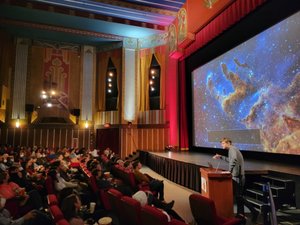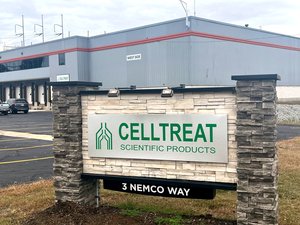
Few understand it – and literally, no one can actually grasp it – but Intangible Capital accounts for roughly 80% of the value of any business.
Mary Adams has devoted her career to teaching the world about it. She is the principal of Boston-based Smarter Companies, and an expert in an evolving kind of accounting called Integrated Reporting (IR) that uses metrics to quantify these “Intangibles.” While the concrete capital of a company lives inside its property, plant and equipment, Intangible Capital includes things like relationships, strategy, organization and other categories elusive to traditional bookkeeping. Considering the discrepancy between its crucial role in value creation and its relative obscurity, we’re living in the brief flicker before everyone knows about Intangible Capital, which is an advantageous place to be if you understand it.
“It’s a competitive advantage,” Adams begins. She has written a book on the subject and should be exasperated, since her field is critical to business survival, yet lives in relative obscurity. Even Fortune 500 Companies who are on board with IR can’t agree on the same nomenclature. While she’s foremost in her field, constantly having to explain her field to the layman has honed her patience; she uses the example of FedEx as my entry point. “Even though FedEx has the largest cargo air fleet in the world, if they lost every plane tomorrow, they would still have a company.” She explains how they’ve invested in the software, the processes, the employees, the relationships, and the myriad intangible things that make them FedEx, so they would still have at least 80% of their company left if the planes disappeared.
“Even though FedEx has the largest cargo air fleet in the world, if they lost every plane tomorrow, they would still have a company.”
I’m trying to think of examples of successful companies that haven’t invested in Intangible Capital when she blows my mind. “Before the mid-1980’s the market value of public companies was 86% concrete, and 14% of what we’d call Intangibles. After the 1980s, those numbers reversed.” The cause? The personal computer “fulcrum.” By upending a company’s dependence on its physical plant, Apple’s desktop computer triggered the automation of mental work and sparked a “knowledge economy” whose effects on value creation will still be felt long into the future.
As the self-professed “Intangible Capital Geek” describes the five different kinds of Intangible Capital included in her Integrated Reporting, she lifts her eyes from the page and observes the coworking space around her, takes note of where the intangibles are hiding in plain sight.
“There’s Human Capital, the capital that goes home at night.” She gestures towards the Space and Community Manager at the front desk. “They bring to the table their background, influence and experience to create innovation, connectivity, and - in a place like this – culture.” Then there’s Relationship or “Network” Capital, which is how the brand chooses partners, interacts with customers, and suppliers. “This,” she motioned towards the members in the next room, “is what creates community.”
The Structural Capital of a company is, as Adams puts it, “the knowledge that stays behind when the employees go home.” These are the processes, design, systems and intellectual property that take a company’s knowledge,” she cups her hands like she’s holding a bird’s egg, “institutionalize it,” she grabs a pen, “and allow it to scale upwards.” She itemizes where she sees this value creation around her, bullet points outlining her coworking space’s policies, training materials, and custom software that enables members to effectively use the shared space. “There’s a guy who will someday get a Nobel named Paul Romer who said certain kinds of knowledge assets have the potential to be scaled infinitely. The only limit to the value of this kind of asset is how many people need it.”
During a short walk around South Station, I start seeing Intangible Capital everywhere.
Next, Adams explains how the “green” branch of Natural Capital creates value through sustainability. “Around here there’s quite a bit of this: efficient design, bike racks, recycling.” I ask if intrinsically the sharing economy creates Natural Capital, sharing resources like space, energy and HVAC. “Absolutely!” Then she goes even deeper, pointing out how the reusable glasses and utensils, fair trade coffee, motion sensor lights… All of these efficiencies create value for a company that cares about Natural Capital. And even though they blur the line into concrete assets, some of the “sharing” aspects of shared offices have a green lining. Pointing over towards the cabinet of office supplies she muses, “How many home offices have drawers filled with old boxes of envelopes? When I need one here, I just grab one.”
Adams taps on the words “culture” and “purpose” in my notes and begins the final chapter of Intangible Capital 101. “Strategic Capital ties all the pieces together- how knowledge of the market and business model support the company’s raison d’être.” Without trying these different value creation streams together with good strategy (and Integrated Reporting), Adams warns that a company risks becoming like the proverbial six blind men trying to describe an elephant by touch. I’m still iffy on how Strategic Capital connects to the other kinds of capital and she says if the different kinds of intangible value creation were to be illustrated by fingers on a hand, then the Strategic Capital would be the thumb.
After our talk, I step outside to let my brain digest these new ideas. During a short walk around South Station, I start seeing Intangible Capital everywhere: the gardens on the Greenway, the software powering the screens at the train station, the twenty-foot tall letters atop State Street Bank, and everywhere brands, brands, brands. It’s ubiquitous and I can’t touch it, but I’m one step closer to getting it.








